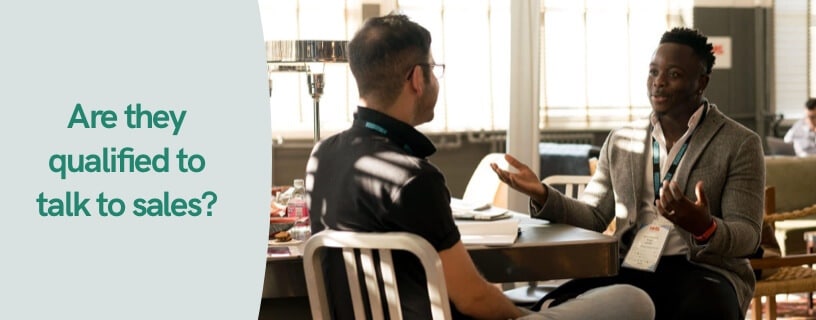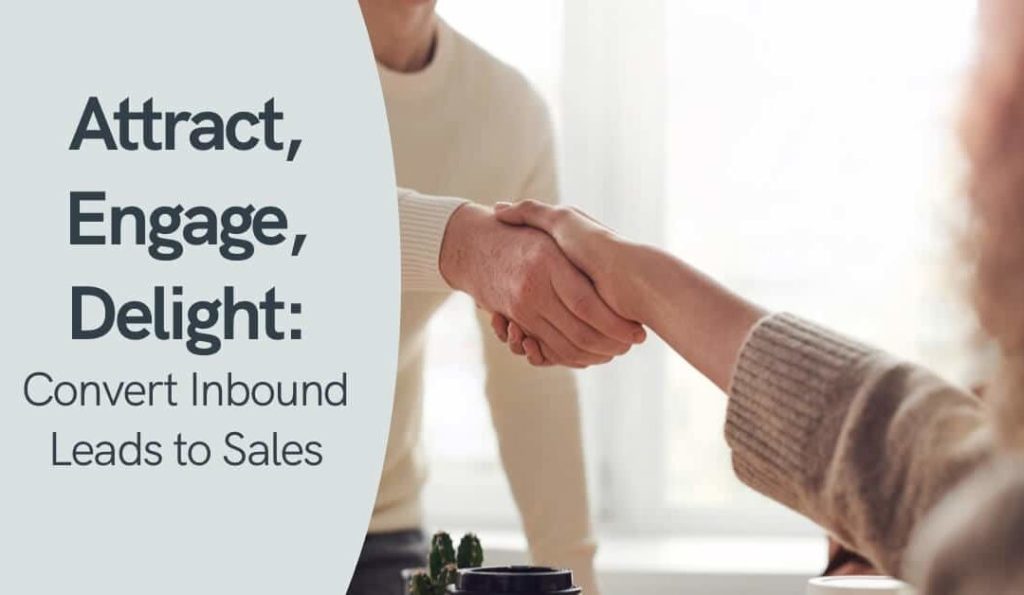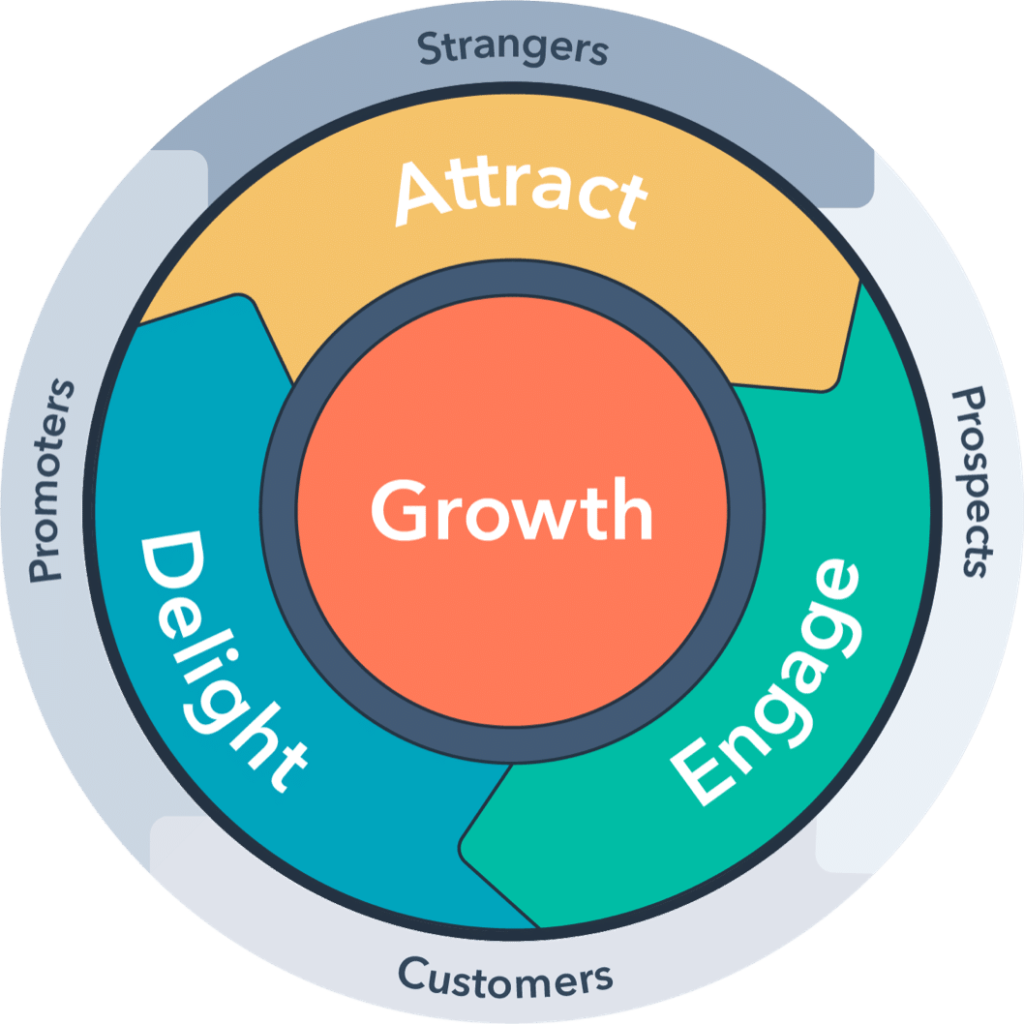Let’s take a moment and remember what it used to be like when B2B buyers actually picked up the phone and called you.
Now, let’s skip ahead to the real world. 65% of ideal buyers skip the sales team altogether when making purchase decisions. By the time they’re ready to buy, if you haven’t been engaging with them, you’ve lost the sale.
That’s why B2B inbound marketing is so essential in lead generation. Inbound marketing strategies generate 54% more sales leads than other marketing efforts.
Table of Contents
ToggleSpinning the Flywheel
A flywheel stores energy depending on how rapidly it spins. In marketing, think of it as a mechanism to build momentum. The faster it spins, the more energy or momentum that’s built up to drive B2B buyers through the sales funnel.
Our colleagues at HubSpot explain how the flywheel concept applies to inbound marketing. Think of the process as a circle with three segments: Attract, Engage, and Delight.
- You attract prospects by creating valuable content. In this phase, you’re not selling, you’re educating, establishing authority, and building trust.
- During the engagement phase, you’re nurturing the budding relationship and moving them through the funnel.
- In the delight phase, you’re helping them achieve their goals and empowering them to make decisions – even after the sale.
When you apply force to the flywheel, it spins faster. Each segment moves seamlessly and builds momentum to drive prospect forward.
The Importance of Lead Generation Forms
The purpose of a lead generation form is to…generate leads. It sounds simple, but you’ve got to create lead gen forms carefully if you want to convert inbound leads. How important is it to get your lead generation forms exactly right? When Expedia deleted just one field from their registration process, it resulted in a $12 million increase in revenue.
Unless someone’s gone directly to your website, they clicked through from somewhere else. In most cases, it’s from a search engine like Google. As they engage with your content, you’re trying to capture them as a lead so you can start to nurture them. While the landing page and call-to-action within the content are important, it’s the form that gets you the lead.
Keep It Simple
Like Expedia, keep your lead generation forms simple. The more friction there is for someone to fill out the form, the less likely they are to complete it. If the information is gated, such as an eBook or article, you want to declutter the form as much as possible. Can it just ask for name and email?
A lot of what your lead generation form will look like depends on where prospects are in the buying journey. If they’re at the top of the funnel, they’re not going to share much with you. As they progress through the funnel, you can increase the information gathering.
Managing Leads
Let’s face it. Some leads are better than others.
When you’re trying to convert inbound leads, segmenting will help separate the best prospects from the drive-bys. It also helps as you put prospects into your marketing funnel to determine the best content to deliver to them.
One way to approach this is to segment by buyer persona and where they are in the buying journey. As you continue to nurture them, you can establish triggers that indicate they are ready to go to the next level. Then, your nurturing process shifts into the next phase.
Segmenting Leads and Inbound Marketing
Inbound marketing efforts provide the right content for these segmented leads. The most effective way is to make sure your efforts extend well beyond the bottom of the funnel leads. You need content to engage prospects at every phase of their buying journey. Here are just a few ideas of ways you can approach each phase:
- Content libraries for each stage
- Smart content that serves different CTAs or offers for each stage
- Customized forms specific to their stage
When they demonstrate the right buying signals, they become Sales Qualified Leads (SQLs).

When Do They Become Sales Qualified Leads (SQLs)
There’s a big difference between a Marketing Qualified Lead (MQL) and a Sales Qualified Lead (SQL).
When someone’s in the MQL pipeline, they’ve shown an interest in your brand, your product, or the information you’ve presented. You’ve made a connection but they aren’t ready to take the next step in their buying journey…yet.
An SQL, by comparison, is someone that’s been researched and vetted by the marketing department. After determining the have the need and the ability to buy, it’s time to hand off the SQL to the sales team for action.
Think of it this way: Marketing qualified leads are aware of the problem that need to solve. Sales qualified leads are more likely to think your product might be a solution.
Lead Scoring
Most companies use a lead scoring system to sort leads based on pre-established criteria. This can depend on how they’ve engaged with your content and your website. An effective scoring system can fast-track priority leads – those most likely to buy – and use marketing automation to continue to nurture prospects until they’re ready for sales.
Buying Signals
Marketing and sales teams should work together to agree on what actions qualify a prospect. As prospects interact, you’ll want to give higher lead scoring to buying signals. For example, downloading an eBook might get one score while asking for a product demo, or requesting a sales call would get a higher score.
It’s important to pass leads to the sales team but many companies make the mistake of passing on all of them. Nearly two-thirds of B2B marketers do this although only a quarter are actually qualified. This can tie up your sales team with prospects that aren’t ready to buy and it may cause them to miss stronger leads. If prospects aren’t going to be receptive right now to listening to the pitch, all you’re doing is slowing your sales team down.
As you nurture leads in your sales funnel, each engagement can improve the lead scoring. When they’ve had the right number of touchpoints, or demonstrating enough buying signals, sales takes over.

Continue Nurturing after Contact
Not every sales qualified lead is going to immediately buy. In fact, almost all of them won’t. For B2B, the sales cycle has become longer than ever. 74% of B2B sales to new customers take an average of four months before closing. 46% of deals extended to seven months or longer.
In today’s environment, sales teams no longer drive the sales process. Buyers are in control and dictate when they’re ready to move forward. If you’re too pushy or try to force them to move along in the funnel before they decide, it can hurt you.
The Business of Risk Mitigation
So much of what you’re doing in sales is about risk mitigation for the buyer. Especially if it’s a big-ticket item, buyers have to feel confident in their decision. If you’re the Chief Marketing Office and your job depends on buying into the right marketing automation system, you’re not going to make a decision until you’ve convinced yourself it’s the right thing for your organization.
To do this, you’ve got to continue to nurture leads and provide prospects with content that builds trust and mitigates the risk. Case studies, testimonials, data that demonstrate results, product demos, competitor comparisons, and referrals are a great way to lessen the risk and build confidence.
No amount of pressure from a sales rep is going to make a difference if they’re not ready to buy. This can be difficult for sales teams, especially if they’re working on quotas or commissions. They want to make the sale now.
Buyers Control the Process
Buyers will decide when they’re ready to move to the next phase. That doesn’t mean you can’t give them a gentle nudge to move them along, however.
At this stage, give some serious thought to how you’re going to delight your prospects and customers. While it’s important at each stage of the funnel, as you head into the home stretch, it’s even more essential.
This isn’t just about engagement or generating content. It’s about creating a stellar customer experience. 73% of customers say this experience is key in influencing purchase decisions and brand loyalty.
Convert Inbound Marketing Leads
Inbound marketing is essential to the B2B buying process. You’ve got to attract, engage, and delight prospects to grab their attention and move them from visitors to leads to customers. As your B2B inbound marketing strategy generates leads, you need to continue to nurture them to convert inbound leads to sales qualified leads before they’re ready for the sale team. Then, you need to continue to nurture them through the process.
Riverbed Marketing is a full-service B2B marketing agency dedicated to delivering clarity, honest, hard work, and measurable results. We’re hardcore B2B inbound marketers obsessed with delivering on our commitments. If we can help grow your business, get in touch with the inbound marketing experts at Riverbed Marketing today.












